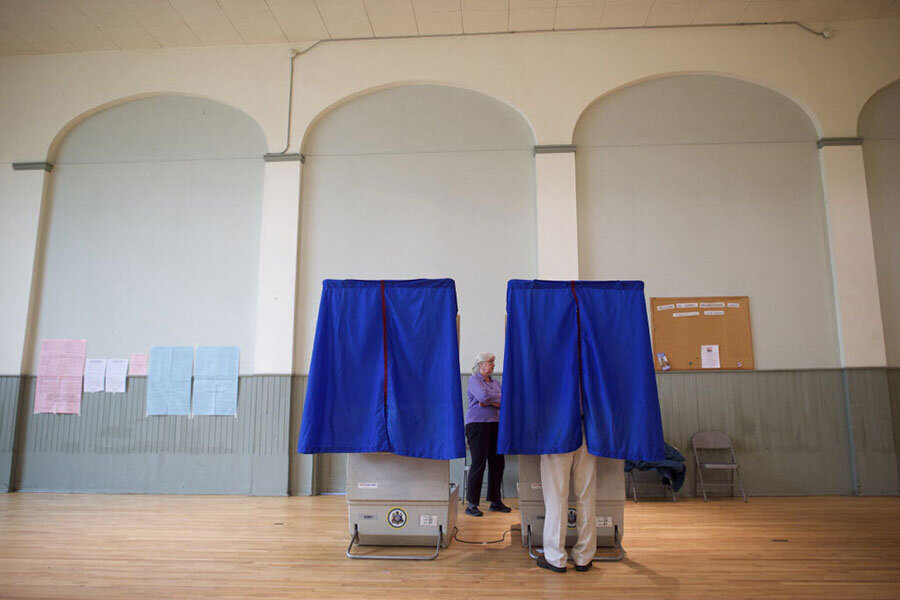Honey, we shrunk the undecided voters
Loading...
Presidential races are like national ad campaigns, right? They combine data research, media buys, and product placement (aka candidate appearances) to sell their wares to a skeptical public.
But how many voters are truly up for grabs? How many are persuadable, susceptible to switching from one candidate to the other?
Probably fewer than you think. The polarization of American politics continues to sort the United States population into political teams that are generally unmoved by the other party’s blandishments.
Ten years ago that might not have been the case. In 2004 fully 25 percent of the US electorate consisted of persuadable partisans, Democrats or Republicans who might be lured to vote for the other side, according to figures from political scientists D. Sunshine Hillygus and Todd Shields. Another 9 percent were persuadable independents, write Ms. Hillygus and Mr. Shields in their book, “The Persuadable Voter.”
That would mean that over a third of voters might have been in play as far as party strategists were concerned. That’s a high percentage. Skillful use of wedge issues such as abortion could make an electoral difference in that context.
But in 2012 another research effort found a different story. At the beginning of President Obama’s reelection campaign about 20 percent of voters overall were persuadable, since they were either undecided or committed to a candidate other than Mr. Obama or Mitt Romney, according to John Sides and Lynn Vavreck, another pair of political science professors.
Mr. Sides and Ms. Vavreck then followed this cohort of the undecided through the ups and downs of the campaign. They found that dramatic gaffes made little difference to these voters, as the miscues were lost amid the tsunami of general campaign coverage.
Then came the kicker: In November, almost half of the persuadable voters didn’t vote at all. Those that did vote, split. About half went for Obama, and half for Mr. Romney. Undecided voters who leaned Democratic overwhelmingly ended up in the Obama camp. Undecideds who leaned Republican overwhelmingly went for Romney. Independents broke slightly for Obama.
All this explains why big political campaigns are increasingly focusing on their own partisans, instead of trying to win over undecideds. It’s easier, and there’s a bigger payoff at the end.








